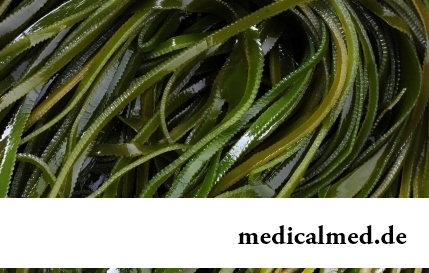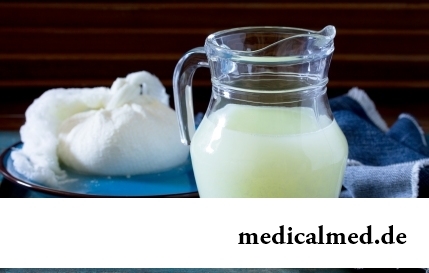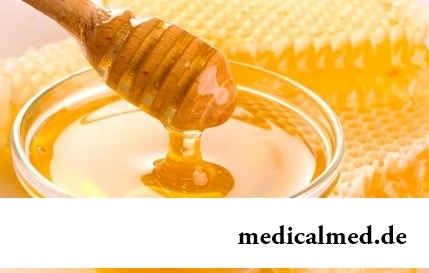





Ibufenum
Application instruction:
 Ibufenum – non-steroidal anti-inflammatory drug (NPVS).
Ibufenum – non-steroidal anti-inflammatory drug (NPVS).
Form of release and structure
Dosage form – suspension for intake: orange color, with an orange smell, division into a liquid layer and a deposit (after agitation they mix up and make homogeneous suspension) is possible (on 100 g in dark glass bottles, in a cardboard pack 1 bottle complete with a measured spoon; on 100 g in plastic bottles, in a cardboard pack 1 bottle complete with the dosing syringe).
Active ingredient: an ibuprofen, in 5 ml of suspension – 100 mg.
Additional substances: a macrogoal глицерилгидроксистеарат, methylparahydroxybenzoate, phosphate sodium a dihydrate, глицерол, sucrose, a karmelloza of sodium, sodium saccharinate, пропилпарагидроксибензоат, aluminum magnesium silicate (вээгум), кросповидон, propylene glycol, citric acid monohydrate, dye a sunset yellow (E110), fragrance orange, the water purified.
Indications to use
Ibufenum is applied to treatment of children.
As an antipyretic:
- Catarrhal diseases;
- Acute respiratory viral infections, including flu;
- Quinsy (tonsillitis);
- Children's infectious diseases;
- Postvaccinal reactions.
As anesthetic at a pain syndrome of various origin of weak and moderate intensity:
- Painful teething, dentagra;
- Headache, migraine;
- Ear-ache at an inflammation of a middle ear;
- Muscle and joints pain owing to musculoskeletal system injuries;
- Neuralgia.
Drug is intended for symptomatic therapy, it reduces pain and an inflammation during its use, does not render on progressing of a disease of influence.
Contraindications
Absolute:
- Full or incomplete combination of bronchial asthma, the nose recuring a polypose and okolonosovy bosoms with intolerance of acetylsalicylic acid or other NPVS (in the anamnesis including);
- Active disease of a liver, heavy liver failure;
- The progressing diseases of kidneys, heavy renal failure (clearance of creatinine less than 30 ml/minute);
- Inflammatory diseases of intestines;
- Erosive and ulcer diseases of bodies of digestive tract (including a peptic ulcer of a stomach and a 12-tiperstny gut in an aggravation phase, a round ulcer, ulcer colitis, a disease Krone);
- Glyukozo-galaktozny malabsorption, intolerance of fructose;
- Deficit of invertase/isomaltase;
- The confirmed hyperpotassemia;
- Blood coagulation disturbances (including tendency to bleedings, lengthening of a bleeding time, hemophilia, hemorrhagic diathesis);
- Children's age up to 3 months;
- Hypersensitivity to drug components, acetylsalicylic acid or other NPVS.
Relative (at the following diseases / states treatment of Ibufenum should be carried out with extra care in connection with risk of development of complications):
- Diabetes mellitus;
- Peptic ulcer of a stomach and 12-tiperstny gut in the anamnesis;
- Existence of an infection of Helicobacter pylori;
- Enteritis;
- Gastritis;
- Colitis;
- Liver and/or renal failure;
- Cirrhosis with portal hypertensia;
- Nephrotic syndrome;
- Heavy somatopathies;
- Diseases of blood of not clear etiology (leukopenia and anemia);
- Hyperbilirubinemia;
- Arterial hypertension, chronic heart failure;
- Children's age of 3-6 months;
- Prolonged use of NPVS;
- Simultaneous use of peroral glucocorticosteroids (including Prednisolonum), antiagregant (including klopidogret), anticoagulants (including warfarin).
Route of administration and dosage
Ibufenum should be accepted inside, after food. Just before reception the bottle should be shaken up. For exact dosing in a set the measured spoon or the syringe is applied.
The single dose makes 5-10 mg on each kilogram of body weight. Frequency rate of reception – to 4 times in bucketed days 6-8 hours. The most admissible daily dose – 20-30 mg/kg.
The recommended dosing modes depending on age and the child's weight:
- 6-12 months (body weight of 7,7-9 kg): on 2,5 ml 3 times a day;
- 1-3 years (10-15 kg): on 2,5 ml 3-4 times a day;
- 4-6 years (16-20 kg): on 5 ml 3 times a day;
- 7-9 years (21-29 kg): on 5 ml 4 times a day;
- 10-12 years (30-41 kg): on 10 ml 3 times a day.
Children aged from 3 up to 6 months Ibufenum can give only to destination the attending physician. The daily dose for them should not exceed 5 ml of suspension. At postvaccinal reactions appoint 2,5 ml, in 6 hours – 2,5 more ml.
Duration of use of drug depending on indications: decrease in the increased body temperature – up to 3 days, stopping of a pain syndrome – no more than 5 days.
Use of Ibufenum complete with the measured syringe:
- To open a bottle: to press a cap, pressing down and to turn counterclockwise;
- To insert the syringe into a bottle mouth opening;
- It is vigorous to shake up a bottle;
- To turn a bottle upside down and, carefully moving the syringe piston down, to pour in contents before achievement of a necessary mark in a scale;
- To turn a bottle in a starting position and accurately rotating movements to take the doser;
- To arrange the syringe in an oral cavity of the child and, slowly pressing the piston, to enter suspension;
- To close a bottle a cap, to wash out the doser clear water and to dry up.
Side effects
- From respiratory system: asthma, bronchospasm;
- From bodies of a hemopoiesis: agranulocytosis, Werlhof's disease, leukopenia, thrombocytopenia, anemia (including aplastic and hemolitic);
- From the alimentary system: aphthous stomatitis, dryness of a mucous membrane of an oral cavity, an ulceration of a mucous membrane of gums and digestive tract (sometimes is complicated by perforation and bleeding), the NPVS-gastropathy (a loss of appetite, a meteorism, diarrhea, an abdominal pain, pain and discomfort in epigastric area, heartburn, nausea, vomiting), a lock, pancreatitis, hepatitis;
- From cardiovascular system: increase in arterial pressure, tachycardia, development or aggravation of heart failure;
- From a nervous system: drowsiness, sleep disorder, psychomotor arousing, depression, irritability, uneasiness, confusion of consciousness, dizziness, hallucinations, headache; seldom – aseptic meningitis (is more often at patients with autoimmune diseases);
- From an urinary system: allergic nephrite, cystitis, polyuria, nephrotic syndrome (hypostases), acute renal failure;
- From sense bodys: dryness and irritation of eyes, disturbance of color sight, amblyopia, scotoma, illegibility of sight or diplopia, chemosis and century (allergic genesis), reversible toxic optic neuritis, ring or sonitus, decrease in hearing;
- Allergic reactions: skin rash (erythematic or small tortoiseshell), skin itch, fever, bronchospasm, anaphylactoid reactions, Quincke's disease, acute anaphylaxis, allergic rhinitis, eosinophilia, toxic epidermal necrolysis, mnogoformny exudative erythema;
- Others: sweating strengthening.
Special instructions
At prolonged use of Ibufenum it is necessary to control a pattern of peripheral blood, a functional condition of kidneys and a liver.
At bronchial asthma or other diseases which can be followed by a bronchospasm the ibuprofen can cause development of a bronchospasm. For this reason at these patients drug has to be used only with respect for big care. In case of difficulty of breath it is necessary to see a doctor urgently.
For the prevention of development of the NPVS-gastropathy Ibufenum is recommended to be combined with prostaglandin E drugs (for example, mizoprostoly). At emergence of symptoms of a disease the careful control of a condition of the patient including the analysis a calla on the occult blood, blood test with definition of hemoglobin and a hematocrit, carrying out an ezofagogastroduodenoskopiya is necessary.
For decrease in risk of development of side effects from digestive tract Ibufenum should be accepted in a minimal effective dose during minimum possible short period.
Patients who are directed to a research on definition of 17 ketosteroids in 48 hours should cancel an ibuprofen.
During treatment it is recommended to avoid administration of drugs, containing ethanol, and also performance of the tasks requiring special attention and speed of reactions.
Sick diabetes mellitus it is necessary to consider that 1 ml of suspension contains about 0,34 g of sucrose or about 0,03 HE. Thus, the minimum single dose of Ibufenum (2,5 ml) contains 0,85 g of sucrose (0,075 XE), in the maximum single dose (15 ml) – 5,13 g of sucrose (0,45 XE).
Medicinal interaction
- Other NPVS (including acetylsalicylic acid): antiinflammatory action of an ibuprofen decreases, side effects amplify (such combination is contraindicated);
- Diuretics: their action is weakened, the risk of development of a renal failure increases (such combination is recommended to be avoided whenever possible);
- Vazodilatatora (including inhibitors of an angiotensin-converting enzyme): their hypotensive activity decreases;
- Peroral hypoglycemic means (especially derivative sulphonylurea) and insulin: their effect amplifies;
- Inductors of a microsomal oxidation (phenylbutazone, rifampicin, Phenytoinum, tricyclic antidepressants, barbiturates, ethanol): the risk of development of heavy hepatotoxic reactions increases;
- Colestyraminum, antiacid means: absorption of an ibuprofen decreases;
- Valproic acid, цефоперазон, пликамицин, цефамандол, цефотетан: frequency of development of a prothrombinopenia increases;
- Gold drugs, cyclosporines: nephrotoxicity of an ibuprofen increases;
- Means with myelotoxic action: manifestations of a gematotoksichnost of an ibuprofen amplify;
- Cyclosporine: its plasma concentration and probability of development of hepatotoxic effects increases;
- The drugs blocking canalicular secretion: removal decreases and plasma concentration of an ibuprofen increases;
- Antiagreganta, indirect anticoagulants, fibrinolitik: their action amplifies, the risk of development of hemorrhagic complications increases;
- Caffeine: the analgeziruyushchy effect of an ibuprofen amplifies;
- Digoxin, methotrexate, lithium drugs: their concentration in blood increases.
Terms and storage conditions
To store at a temperature up to 25 ºС in the place protected from light unavailable to children.
Period of validity – 3 years, after the first opening of a bottle – 6 months.
The well-known drug "Viagra" was initially developed for treatment of an arterial hypertension.

People know that thermal sources have salutary force long ago. Treatment by natural waters is one and...
Section: Articles about health
Cold is such painful that each sigh becomes a victory, heat "knocks" down, and the ache in joints forces to think only of pain. Some people with approach of the first symptoms of cold make the self-sacrificing decision to have a disease standing, and to a beam...
Section: Articles about health
Impossibility to conceive the child – a trouble of many Russian families. During quite long time was considered that main "culprits" of troubles such are women. Modern physicians claim that the situation is different: about a half of failures in attempts of reproduction are connected with male infertility....
Section: Articles about health
According to data of World Health Organization, the cataract is diagnosed almost for 7% of the population of Earth. Statistics we get sick...
Section: Articles about health
For residents of the countries of Southeast Asia various algas are an obligatory component of a daily diet. Their popularity is connected not only with high tastes, but also with numerous curative properties. Russians are a little familiar with...
Section: Articles about health
The state of health of the person depends on many factors. One of the most important is the constant, but not exhausting a physical activity. In the presence of various illnesses specialists often advise patients to do swimming which by right takes the leading place by efficiency of improvement, having at the same time a few contraindications. Today we will talk about the main directions of therapeutic impact of swimming on a human body....
Section: Articles about health
Each of us faces from time to time that other people need the immediate help. We react to it on-raznomu:...
Section: Articles about health
Milk and products of its processing by right occupy one of the main places in a diet of the modern person. They contain proteins, necessary for normal life activity, fats, vitamins and microelements, and are an important part of various medical diets....
Section: Articles about health
The words "disease" and "patient" not without reason come from one root – "pain". As a rule, symptoms of illnesses thoroughly spoil to patients life. However from this rule there are exceptions. Some diseases are shown by signs which can cause even positive emotions. It is a pity only that the majority of such illnesses are heavy and incurable....
Section: Articles about health
Osteoporosis this general disease which main sign is decrease in density of a bone tissue. On width распростран...
Section: Articles about health
Weakness of an ankle joint – very widespread problem. Its existence is demonstrated by tendency to a podvorachivaniye of legs when walking on heels, frequent painful sprains, pain on average and anonymous toes even after small nagruzo...
Section: Articles about health
The mankind knows that some toxins at intake in the minimum quantities have therapeutic effect from an extreme antiquity. Many substances recognized poisonous are applied in the medical purposes also today, being the main operating components of the medicines which are officially produced by pharmaceutical industry. Let's tell only about the most known of them....
Section: Articles about health
The majority of gynecologic diseases prove three main signs, each of which speaks about need to the visa...
Section: Articles about health
Radiological methods of a research are applied in medicine more than hundred years, and thanks to them millions of lives were saved. In many cases without X-ray it is impossible to make exact idea of a condition of bodies and fabrics, it is correct to make the diagnosis. Those...
Section: Articles about health
For the person who daily since morning gathers for work it is very important to wake up vigorous and ready by day of work. Actually, each of us experiences difficulties with this, at first sight, simple business from time to time. After night rest exert impact on a condition of an organism the weather which collected for several days fatigue, household and office problems, quality of a dream and many other factors....
Section: Articles about health
Childbirth is the most important event in life of each woman. We are women we give birth to the new little man on this light. Now...
Section: Articles about health
The endocrine system carries out extremely important role in a human body, practically all processes of life activity are regulated by it. Closed glands (hemadens) produce special biologically active agents – hormones which then o...
Section: Articles about health
The name of this disease precisely reflects the problem reason: it consists in the bra fastener pressure upon a certain zone of a back. At the same time one of vertebrae of chest department of a backbone is as if blocked and loses mobility, and the loading falling on it is distributed on the next vertebrae. At 70-80% of women local pains in a backbone point on which the fastener of the often put most on bra presses result....
Section: Articles about health
All of us, unfortunately, should face flu nearly an every year. It would seem, so frequent disease has to be study...
Section: Articles about health
Some people consider what for medicine of the 21st century of secrets in the field of health of the person almost does not exist. It absolutely not so. The more answers scientists receive, the more the most difficult questions are raised for them by life. Besides, there are diseases, not объясн in any way...
Section: Articles about health
Proofs of efficiency of Mildronate at treatment of coronary heart disease with stenocardia can be found in many publications of the end of the twentieth century. Researches were conducted since 1984, including placebo - controlled effects. In total clinical tests of Mildronate were carried out for more than thirty years....
Section: Articles about health
The varicosity has familiarly many, statistically, this disease more than a half of all adult population. As...
Section: Articles about health
Eyes – one of the most vulnerable areas on a face therefore age changes concern them first of all. Whether it is possible to keep look youth for many years and what procedures are offered for achievement of this purpose by cosmetologists? And maybe, only thing of a vari...
Section: Articles about health
Healthy lifestyle today in fashion, and many parents think of that the child from the early childhood played sports. Trainings will help it to become strong and hardy, will improve coordination of movements, and also will exert positive impact on mentality: it will become more collected and purposeful....
Section: Articles about health
Traveling all over the world, many try to try the most exotic dishes of national cuisines. Exists even so-called died away...
Section: Articles about health
Aging — natural and inevitable process. Over time our skin loses elasticity, on it saggings are formed, the face form loses former clearness. The procedure of nitevy lifting (nitevy tightening) can successfully solve this problem. In order that it is better познако...
Section: Articles about health
About 10-15 years ago existence of the computer in the apartment of the Russian was considered as a rarity and office rooms were only at the first stage of equipment by these useful devices. Today practically in each house there is a computer (and often not one), and a regular user is already every our second compatriot. Convenience and efficiency of personal computers are undoubted, but the people working with them daily have to know also about health hazard which they can predstavlit...
Section: Articles about health
